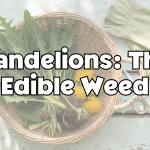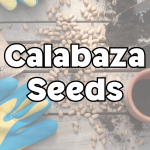Tips, Tricks, Lessons-Learned, and so much more
I have to be honest because the first time I tried to forage for wild garlic, it didn’t go perfectly, and I was wearing the wrong shoes, and the ground was muddy, and the kids were already complaining, and I kept thinking I saw garlic leaves, but they were just random plants
But then I smelled it and I knew I had found it because wild garlic has this strong garlicky smell that you just can’t miss and once you smell it you’ll know exactly what I mean.
We went out one spring morning, and we had a basket and a lot of hope and Arya spotted the flowers first and Leo nearly stepped right on a patch, but I shouted stop just in time and it wasn’t perfect and we weren’t pros but it felt special because we were learning together.
We only picked a little because I read that taking too much can hurt the plants and wild garlic needs to grow back next year so we were careful and respectful, and honestly, it felt good to be gentle with nature.
When we got home I made this pesto and I was honestly surprised because it turned out so fresh and lemony and smooth and it was way better than I expected Now we make it every spring
I didn’t add cheese this time because we’re trying to cut back on dairy and also the lemon and garlic made it flavorful enough on their own and if you do add cheese, you might want to skip the salt.
One quick tip though, because I made this mistake the first time and it wasn’t pretty, and please don’t toss the pesto with hot pasta in a pan because the heat makes the green turn dark and dull so always mix it in a bowl off the heat and your pasta will stay shiny and bright
Have you ever gone looking for wild garlic and if not maybe now is the time Don’t worry because I’m going to show you everything step by step and I’ll explain how to find it and how to know it’s safe and of course, how to make this simple, delicious pesto at home.
Check this Cherry Plums recipe.
How to Forage Wild Garlic
Wild garlic is a delicious and versatile wild plant that can be found in many parts of the world. It has a strong garlicky flavor that can be used to add flavor to a variety of dishes. Wild garlic is also a good source of vitamins and minerals.

How to identify wild garlic?
If you are interested in foraging for wild garlic, there are a few things you need to know. First, it is important to identify wild garlic correctly. Wild garlic can be easily confused with Lily of the Valley, which is poisonous. The best way to identify wild garlic is by its smell. Wild garlic has a strong garlicky smell, while Lily of the Valley has a sweet smell.
The flowers are also distinctive. Lily of the Valley has pretty bell-shaped flowers that hang along the arching stems, whereas wild garlic has white six-petalled starbursts emanating from straight stems. The wild garlic leaf is broad, toothless, and narrows to a point.
Picking wild garlic
Once you have identified wild garlic, you can begin foraging. Wild garlic is best foraged in the springtime, when the leaves are young and tender. You can find wild garlic in woodlands, hedgerows, and other shady areas. When foraging, be sure to only pick the leaves that you need. Over-foraging can damage the plant and prevent it from growing back.

Is it legal to pick wild garlic?
It is illegal to remove wild garlic bulbs without permission from the landowner or occupier, but you may collect the above-ground parts. Be responsible in your harvesting. Reduce the damage you cause to any particular plant by collecting leaves from all over the patch, and be mindful that you may be trampling other plants in the process.
What can wild garlic be used for?
Wild garlic can be eaten raw or cooked. It can be added to salads, soups, stews, and other dishes. Wild garlic is also a good addition to pesto and vinaigrettes.

Here are some additional tips for foraging wild garlic:
- Look for wild garlic in hedgerows, woodlands, the edge of fields, and shady areas.
- Wild garlic often grows in clusters, so be sure to check the entire area before moving on.
- When wild garlic is around, you’ll be able to smell it; the air has a fragrant, garlicky, oniony fragrance to it.
- If you are unsure about whether a plant is wild garlic, leave it alone. It is better to be safe than sorry.
- Once you have harvested your wild garlic, store it in the refrigerator for up to a week.
Foraging for wild garlic is a great way to get fresh, healthy food for free. It is also a fun and rewarding experience. If you are interested in foraging for wild garlic, be sure to do your research and identify the plant correctly. With these tips in mind and a little knowledge, you can enjoy the delicious flavor of wild garlic in your own kitchen.
Here’s the recipe for my best Wild Garlic and Lemon Pesto:
Wild Garlic and Lemon Pesto:
Ingredients
- 150g Wild Garlic (see tips on foraging above)
- 1 Garlic Clove (if you like your pesto pungent, if not leave it out)
- Zest of 1 lemon
- Juice of a lemon
- 150ml Extra Virgin Olive Oil or Vegetable oil
- 50g of toasted nuts (any combination of hazelnut, walnut, almond, cashew or pine nuts)
- Sea salt flakes
- To serve
- 500g dry spaghetti
- Wild garlic flowers
- Lemon zest
How to Make Wild Garlic and Lemon Pesto?
- Rinse the garlic leaves (remove any damaged or yellowing leaves). Roughly chop the leaves.
- Smash the garlic clove with a pestle and mortar. Add the nuts and smash. Add the wild garlic leaves a few at a time and continue to pulverise. Add lemon zest. You’re looking for all ingredients to be crushed up and evenly distributed into a thick green chunky paste. If you prefer you can add them to a food processor altogether and pulse.
- Drizzle in the olive oil a little at a time and mix. If you’re using a food processor drizzle the olive oil in on a very low speed.
- Season with a pinch of sea salt flakes and a good squeeze of lemon juice.
To serve
- Cook your spaghetti according to the packet instructions in well salted water. Cook until al dente, typically between 9 and 11 minutes.
- Drain the spaghetti in a colander reserving at least 250ml of the cooked pasta water (it’s easiest to scoop some out just before draining the pasta but you can also place a cup or jug under the colander as your drain it. Don’t remove the pasta water earlier as it won’t be starchy enough).
- Add the cooked spaghetti to a bowl. Add the pesto and some of the reserved water. The pasta water helps the pesto be distributed evenly over the spaghetti. Mixing and tossing together in the bowl homogenises the pasta water and pesto. If the pasta is not loose enough add some more of the water. Your spaghetti should take on the green of the pesto and look shiny and silky.
- Plate your spaghetti immediately. I like to twist it around some tongs to serve it in pretty nests. Grate over some lemon zest, sprinkle some wild garlic flowers and serve!
Notes
- I chose not to add cheese to my pesto. If you do add parmesan or an equivalent, do not also add the sea salt.
- Penne is also a great pasta for use with pesto.
- There will be some left over pesto, this can be stored in an airtight container in the fridge for up to a week.
- Some olive oils can be a little bitter and this is not desirable in this recipe.
- The toasted nuts can be substituted for toasted sunflower seeds.
- Never toss pesto pasta on a hot stove. The heat will make the green ingredients darken. Wild garlic is as susceptible to this as basil.
- Do not reheat leftovers. The heat will make the pesto black. Instead, bring them to room temperature and enjoy.






[…] I mix it with other greens or lightly sauté it with lemon and garlic and it’s delicious and even the kids eat it sometimes if I sprinkle cheese on […]
[…] Read also: The Best Punchy Wild Garlic and Lemon Pesto […]